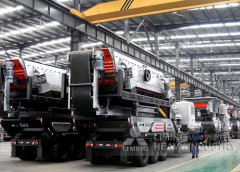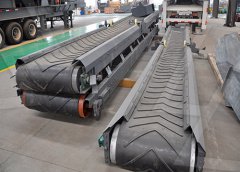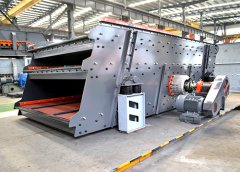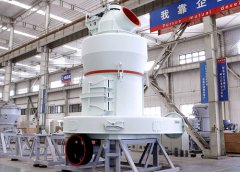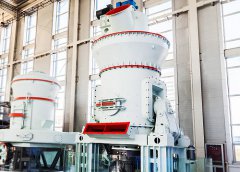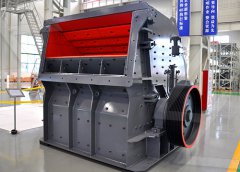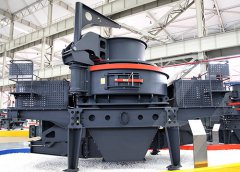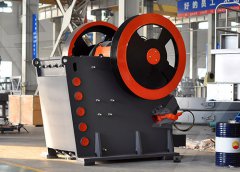
Iron Native Mineral Properties, Uses and Occurrence
Iron By Mahmut MAT Modified date: 23/04/2023 Five percent of Earth’s crust is made up of iron. Native iron is rare in the Iron is a chemical element with the symbol Fe (from Latin ferrum 'iron') and atomic number 26. It is a metal that belongs to the first transition series and group 8 of the periodic table. It is, by mass, the most common element on Earth, just ahead of oxygen (32.1% and 30.1%, respectively), forming much of Earth's outer and inner core. It is the fourth most common element in the Earth's crust, being mainly deIron
احصل على السعر
Iron Mineral Data
Physical Properties of Iron : Cleavage: {001} Perfect, {010} Perfect, [100} Perfect : Color: Iron black, Dark gray, Steel gray. Density: 7.3 7.9, Average = 7.6 : Diaphaneity: Iron (Fe), chemical element and one of the transition elements, the most-used and cheapest metal. Iron makes up 5 percent Iron Element, Occurrence, Uses, Properties, & Compounds
احصل على السعر
Iron Minerals Education Coalition
Description Iron (element #26, symbol Fe) is the most common metallic element in the universe. When pure it is a dark, silvery-gray metal. It is a very reactive element and oxidizes (rusts) very easily. The reds, oranges Iron is the fourth most abundant element, by mass, in the Earth’s crust. The core of the Earth is thought to be largely composed of iron with nickel and sulfur. The most common Iron Element information, properties and uses Periodic
احصل على السعر
Iron ore
Iron ores [1] are rocks and minerals from which metallic iron can be economically extracted. The ores are usually rich in iron oxides and vary in color from dark grey, bright yellow, or deep purple to rusty red. The iron The classification of minerals is a process of determining to which of several groups minerals belong based on their chemical characteristics. Since the 1950s, this Classification of minerals
احصل على السعر
Iron Fe (Element) PubChem
Iron is the cheapest and one of the most abundant of all metals, comprising nearly 5.6% of the earth's crust and nearly all of the earth's core. Iron is primarily obtained from the minerals hematite (Fe 2 O 3) and magnetite The classification of minerals is based on three main criteria: chemical composition, physical properties, and crystalline/crystal structure. Chemical Composition. All minerals are composed of various What is a Mineral: Definition, Formation, Structure
احصل على السعر
Classification Of Minerals Geology Page
Melanterite is an iron ore which is formed by the oxidation and hydrothermal alteration of pyrite (FeS2) or other iron sulfide minerals. This species is yellow green to deep green due to the presence of iron. Geologists first classified minerals according to their primary chemical composition, such as iron or copper. In the mid-19th century, American geologist, mineralogist, and zoologist James Dwight Dana created a Mineral Classification Sternberg Museum of
احصل على السعر
Classification of Vitamins and Minerals Nutrition: Science and
Classification of Minerals. Minerals are classified as either major minerals or trace minerals, For example, vitamin C boosts iron absorption, and vitamin D boosts calcium and magnesium absorption. As is the case with vitamins, mineral absorption can be impaired by certain gastrointestinal disorders and other diseases,Hematite, the main iron ore found in Brazilian mines Stockpiles of iron ore pellets like this one are used in steel production An illustration of iron ore being unloaded at docks in Toledo, Ohio. Iron ores are rocks and minerals from which metallic iron can be economically extracted. The ores are usually rich in iron oxides and vary in color from Iron ore
احصل على السعر
Mineral
A 2011 article defined icosahedrite, an aluminium-iron-copper alloy, as mineral; named for its unique natural icosahedral symmetry, it is a quasicrystal. Unlike a true crystal, quasicrystals are ordered but not periodic. Mineral classification schemes and their definitions are evolving to match recent advances in mineral science.Iron is an essential element for all forms of life and is non-toxic. The average human contains about 4 grams of iron. A lot of this is in haemoglobin, in the blood. Haemoglobin carries oxygen from our lungs to the cells, where it is needed for tissue respiration. Humans need 10–18 milligrams of iron each day.Iron Element information, properties and uses Periodic Table
احصل على السعر
IRON: Overview, Uses, Side Effects, Precautions, Interactions
Overview. Iron is a mineral. Most of the iron in the body is found in red blood cells and muscle cells. Food sources include meat, fish, beans, spinach, and cereal. Iron helps red blood cellsComposition. Composition refers to a rock’s chemical and mineral make-up. For igneous rock, the composition is divided into four groups: felsic, intermediate, mafic, and ultramafic. These groups refer to differing amounts of silica, iron, and magnesium found in the minerals that make up the rocks.4.1: Classification of Igneous Rocks Geosciences LibreTexts
احصل على السعر
Iron Minerals Education Coalition
Description. Iron (element #26, symbol Fe) is the most common metallic element in the universe. When pure it is a dark, silvery-gray metal. It is a very reactive element and oxidizes (rusts) very easily. The reds, oranges and yellows seen in some soils and on rocks are probably iron oxides.Iron ore grinding and classification8.3.1. Examples of iron ore grinding and classification flowsheets. Compared to direct shipping hematite ores mined from the upper regolith, magnetite deposits are much finer grained and therefore require significant grinding to liberate the magnetite from its silicate matrix.Comminution and classification technologies of iron ore
احصل على السعر
Reading: Classifying Minerals Geology Lumen
Minerals are classified according to their chemical properties. Except for the native element class, the chemical basis for classifying minerals is the anion, the negatively charged ion that usually shows up at the end of the Classification: Basalt is classified based on its mineral composition, texture, and chemical characteristics. One commonly used classification scheme is the TAS classification, which categorizes Basalt Properties, Formation, Composition, Uses
احصل على السعر
Facts about iron Live Science
Iron is mostly obtained from minerals hematite and magnetite. In smaller degrees, it can also be obtained from the minerals taconite, limonite and siderite, according to Jefferson Lab .Classification and Nomenclature of Minerals Unit 3 The Berzelian mineral classification system was named in honor of the Swedish chemist and mineralogist Jons Jakob Berzelius The iron group contains iron (Fe) and nickel (Ni). These metals possess a Classification and Nomenclature of Minerals KSU
احصل على السعر
2.3: Mineral Groups Geosciences LibreTexts
Exercise 2.2 Mineral groups; Most minerals are made up of a cation (a positively charged ion) or several cations, plus an anion (a negatively charged ion (e.g., S 2−)) or an anion complex (e.g., SO 4 2−). For example, in the mineral hematite (Fe 2 O 3), the cation is Fe 3+ (iron) and the anion is O 2− (oxygen). The two Fe 3+ ions have an overall charge of National Mineral Inventory database is maintained by: IBM for 70 non coal solid minerals GSI for coal and lignite Dept. of Petroleum & Natural Gas for oil and gas Both government and private exploration agencies followed the classification of mineral reserves/resources evolved by GSI in 1981GEOLOGICAL EXPLORATION AS PER UNFC STAGES AND FIELD
احصل على السعر
Iron Consumer Office of Dietary Supplements (ODS)
What is iron and what does it do? Iron is a mineral that the body needs for growth and development. Your body uses iron to make hemoglobin, a protein in red blood cells that carries oxygen from the lungs to all parts of the body, and myoglobin, a protein that provides oxygen to muscles. Your body also needs iron to make some hormones.. How much Nearly about 98.5% of Earth’s crust is made up of only eight elements. These eight elements are oxygen, silicon, aluminium, iron, calcium, sodium, potassium, and magnesium. These are the elements that are made up of most minerals. All minerals have a specific chemical composition.Types of Minerals Classes, Examples, Uses, Properties and FAQs
احصل على السعر
Types Of Minerals : Types Of Minerals by Unacademy
India produces around 87 minerals, which includes 4 fuels, 10 metallic, and 47 non-metallic, 3 atomic and 23 minor minerals. The country produces many important minerals like coal, iron ore, manganese ore, mica, bauxite, chromite, diamonds and limestone. Gujarat and Rajasthan are major producers of salt.
احصل على السعر
